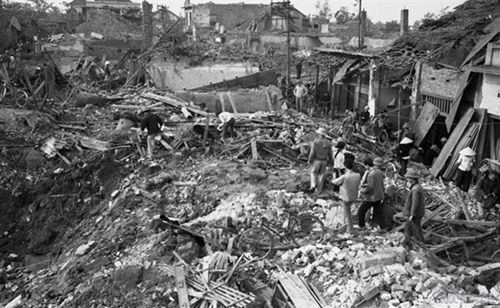December 20, 2022 | 22:11 (GMT+7)
U.S. air force’s 1972 Hanoi bombardment a mistake: US scholar
The air raids with the mobilisation of B-52 strategic bombers by the U.S. on Hanoi at the end of 1972 was a mistake, said Dr. Andrew Wells-Dang from the U.S. Institute of Peace (USIP).
In a recent interview granted to the Vietnam News Agency, he said the airstrikes, known as the “Linebacker II," was the largest bombing campaign of the U.S. air force after World War II, but it failed completely.
By 1968 or even earlier, the U.S. had realized that they could not win the Vietnam War, but Washington still did not give up because it feared losing its credibility during the Cold War.
    |
 |
|
Kham Thien street in Hanoi after the airstrikes by the U.S. (File photo) |
By 1972, movements calling for peace in Vietnam were increasingly influential in the U.S. as well as other countries. However, negotiations dragged on for years because the U.S. administration prioritized war over peaceful measures.
The expert said after the war, Vietnam and the U.S. rebuilt their relationship and the U.S. learned many lessons from the mistakes in the campaign.
During the 12 days and nights of fierce fights in Hanoi in late December 1972 against the U.S. air force, the Vietnamese troops and people defeated U.S. airstrikes in the North, shooting down 81 aircraft of all kinds, including 34 B-52s, forcing the U.S. to sign the Paris Agreement on ending the war and restoring peace in Vietnam in January 1973.
Wells-Dang has lived in Vietnam for 20 years. He worked with a group of experts on Asia at the USIP to build projects to overcome post-war consequences in Vietnam, holding seminars on war legacy, contributing to boosting the U.S.-Vietnam relationship.
Source: VNA